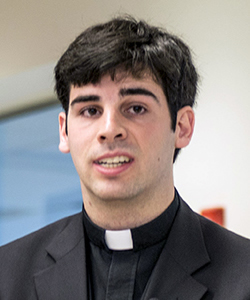Last week at Georgetown, Campus Ministry held an event entitled “The Chosen, the Saved, and the Damned: Contending with Religious Exclusivism,” an interfaith conversation held between chaplains from different faith traditions. Through the panel, each chaplain spoke of what their religion teaches regarding salvation, particularly for those of different faiths. Over the course of the discussion, I found that while the dialogue was important, it was not perfect and revealed two of the major difficulties for engaging in interfaith dialogue today.
The first challenge I noticed was the temptation to apologize for the faith in such a dialogue. It is easy to see how in an attempt not to offend the other person we would be tempted to relax on the harshest of our faith’s teachings and speak in an apologetic tone over the disagreements discovered in the course of interfaith dialogue. However, if we give into this we end up with an incomplete conversation at best, with some of the most important points of dialogue not mentioned. In this past dialogue, it was clear where the panelists shied away from making that normative claim of their religion. In having a fruitful dialogue, one can’t simply resign the differences of faith as being merely differences of perspective or preference. At some point, in order to have a complete dialogue, one must take the stance “I am right, and you are wrong.” This may sound harsh (and perhaps it is); however, normative claims are essential to fully engaging in any dialogue. Firstly, a claim on what is right and wrong gets to the very core of any faith, which allows for discussion on the most fundamental aspects of the differences of faith. If we only look at differences of faith as superficial things, then we will never get beyond a simple comparison in dialogue. And while there is a place for such comparisons, to get beyond that we must grapple with the difficult statements of faith. A second thing that comes about when you make normative statements is that both participants in the dialogue acknowledge that there is a truth that can be reached about faith. This gives dialogue much greater meaning and importance than simply being something we do to get along. In seeking for the truth, we also may find that it is easier to grapple with the divisive issues surrounding faith in the search for a greater understanding of what really is, not what is perceived to be.
The other major challenge I noticed rested in engaging and incorporating atheists into an interfaith dialogue. There are many reasons why this is so challenging, particularly because of the core differences between atheists and theists both in structure and substance of belief. In the event last week, it was certainly a challenge to incorporate the atheist belief as the focus of the event was based on the premise of there being some form of salvation. However, this challenge too can be surmounted through an emphasis on the normative. While the belief in the transcendent may not unify all people in dialogue, a search for truth can bridge these differences. Now, one may claim that such dialogue based on normative claims could descend into merely an interfaith debate, though this need not be the case. Certainly disagreements will arise and there will be a tension between different beliefs, as is always the case in a truthful dialogue. However, these tensions don’t have to be expressed through simple opposition to the other. Instead tension can be transformed into a process which leads to greater understanding and respect of the other as well as a greater pursuit for the truth. This creative tension, as I call it, takes the energy and passion that would drive us apart and transforms that into a passion for something greater. In understanding and conversing with other faiths, we can come to know better our own faith and reach further towards what the ultimate truth is.
And this dialogue can be strengthened through a focus on specific issues that people of different faith and non-faith traditions agree or disagree upon. And this is why engaging in community service is such an important tool for interfaith dialogue. In finding a common ground in service, we can go on to explore the significance of this for our faith and seek what truths can be learned from this. Similarly, when we discuss divisive issues (and there are plenty of those these days), we can work through these differences with that creative tension that directs the passions for our beliefs towards a passion for ultimate knowledge and understanding. Interfaith dialogue is not about ignoring or apologizing for our differences, but rather, it engages those differences in the pursuit of something greater.

